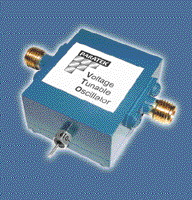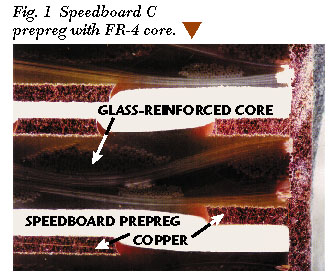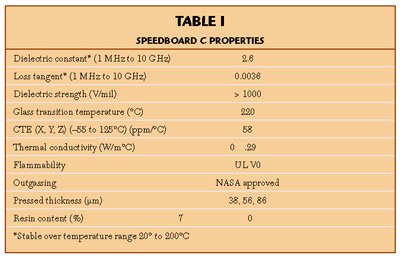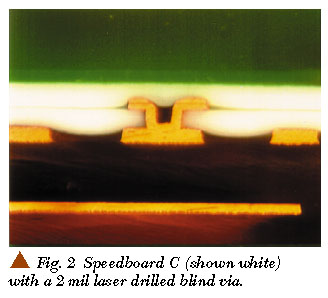A Low Loss HDI Dielectric for High Frequency Modules and PCBs
W.L. Gore & Associates Inc.
Elkton, MD
 The wireless telecommunications market continues to require denser circuitry and higher I/O count chip packages to meet ever growing performance requirements. These new requirements can only be satisfied with multilayer PCBs incorporating RF and microwave, as well as digital signal processing circuitry on the same high density interconnect (HDI) multilayer circuit board. These multilayer PCBs are used in applications from Bluetooth modules to base stations and consist of thin dielectric layers interconnected with microvias. The dielectric layers are sequentially laminated on FR-4 or other conventional cores to make up the mixed signal multilayer PCB. One dielectric that has been proven in the industry as a high speed prepreg is now seeing significant growth in HDI applications. Speedboard© C prepreg is being used as a low loss HDI dielectric that improves the performance of these controlled impedance, high speed digital, RF and microwave PCBs by making them thinner, lighter and faster. The product is comprised of expanded polytetrafluoroethylene (ePTFE) that has been impregnated with a modified BT resin. The air space inside the ePTFE is replaced with resin and the ePTFE membrane becomes the carrier or delivery system for the resin. The conformable ePTFE toughens the dielectric, improving reliability and enabling excellent surface planarization for high density fine lines and spaces.
The wireless telecommunications market continues to require denser circuitry and higher I/O count chip packages to meet ever growing performance requirements. These new requirements can only be satisfied with multilayer PCBs incorporating RF and microwave, as well as digital signal processing circuitry on the same high density interconnect (HDI) multilayer circuit board. These multilayer PCBs are used in applications from Bluetooth modules to base stations and consist of thin dielectric layers interconnected with microvias. The dielectric layers are sequentially laminated on FR-4 or other conventional cores to make up the mixed signal multilayer PCB. One dielectric that has been proven in the industry as a high speed prepreg is now seeing significant growth in HDI applications. Speedboard© C prepreg is being used as a low loss HDI dielectric that improves the performance of these controlled impedance, high speed digital, RF and microwave PCBs by making them thinner, lighter and faster. The product is comprised of expanded polytetrafluoroethylene (ePTFE) that has been impregnated with a modified BT resin. The air space inside the ePTFE is replaced with resin and the ePTFE membrane becomes the carrier or delivery system for the resin. The conformable ePTFE toughens the dielectric, improving reliability and enabling excellent surface planarization for high density fine lines and spaces.
Speedboard C prepreg has traditionally been used as a bonding sheet to bond together the inner layer core material in multilayer PCBs. Ultimately, the resin flows, fills and bonds during the lamination process the same as a conventional glass-based thermoset prepreg. Speedboard C is also an excellent choice to replace thermoplastic fluoropolymer bondfilms and fusion bonding processes in PTFE microwave PCBs.
MATERIAL PROPERTIES
Speedboard C material features a low dielectric constant of 2.6 and a low loss tangent of 0.0036 that is stable over frequency and temperature. It utilizes standard thermoset processing as opposed to fusion processing. The material forms thin bonding layers and features a controlled flow and fill, as shown in Figure 1.

Multiple plies of prepreg can be used to obtain a wide range of dielectric thickness for controlled impedance layers. In addition, the material is fully compatible with all laminates and affords very fast laser drilling speeds. Table 1 lists Speedboard C prepreg properties.

THE LAMINATION PROCESS
The standard hydraulic lamination recommended for cyanate resin systems is used for normal lamination using Speedboard C prepreg. Two high throughput temperature cycles have been used for the prepreg, depending on the glass transition temperature of the inner layer core materials or other process considerations. Vacuum lamination is recommended and cooling under pressure is preferred.
Speedboard prepregs are excellent materials for via processing in HDI-type PCBs, as shown in Figure 2. Reliable laser microvias as small as 25 µm (1 mil) have been drilled using harmonic YAG, CO2 and excimer lasers. The thin, uniform, all organic nature of the prepreg allows for rapid and clean lasing of vias. No plasma treatment of the via is necessary prior to copper metallization. However, if mechanical holes are drilled, plasma or sodium etching is recommended for those holes.

PERFORMANCE BENEFITS
Several distinct performance benefits are derived from the use of Speedboard C prepregs. Its low dielectric constant reduces signal delay and offers a designer increased electrical line lengths for FR-4 construction. The reduced effective dielectric constant also yields a thickness reduction for FR-4 boards, thus allowing greater overall layer density, thinner board construction and reduced weight.
The lower dielectric constant allows the velocity of propagation to increase significantly over an all FR-4 solution, and Speedboard C prepreg can be combined with all types of laminates to lower the effective dielectric constant of the PCB. The material's lower loss tangent results in significant reductions in signal attenuation, and the lower dielectric constant permits wider line widths for a given transmission impedance, thus maximizing tract cross-sectional area and reducing skin effect. In general, Speedboard C combines the electrical benefits of PTFE with the processability of thermoset resins.
CONCLUSION
Mixed dielectrics are becoming popular in today's microwave and high speed digital PCBs. The use of Speedboard C prepreg, whether as a prepreg or an outerlayer HDI dielectric, for critical signal routing while using low cost FR-4 for non-critical layers in multilayer PCBs provides a good solution for these applications. Additional information may be obtained from the company's Web site at www.gore.com.
W.L. Gore & Associates Inc., Elkton, MD (800) 445-4673.
